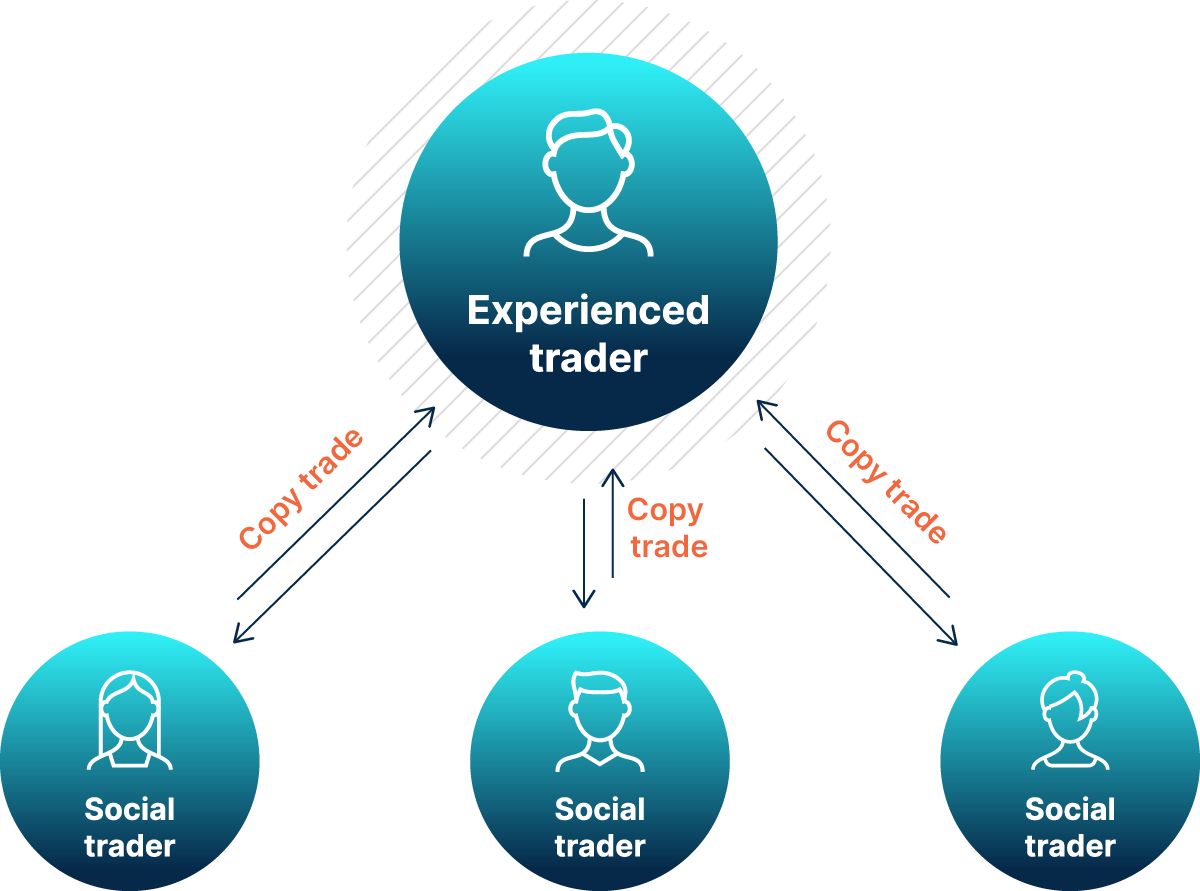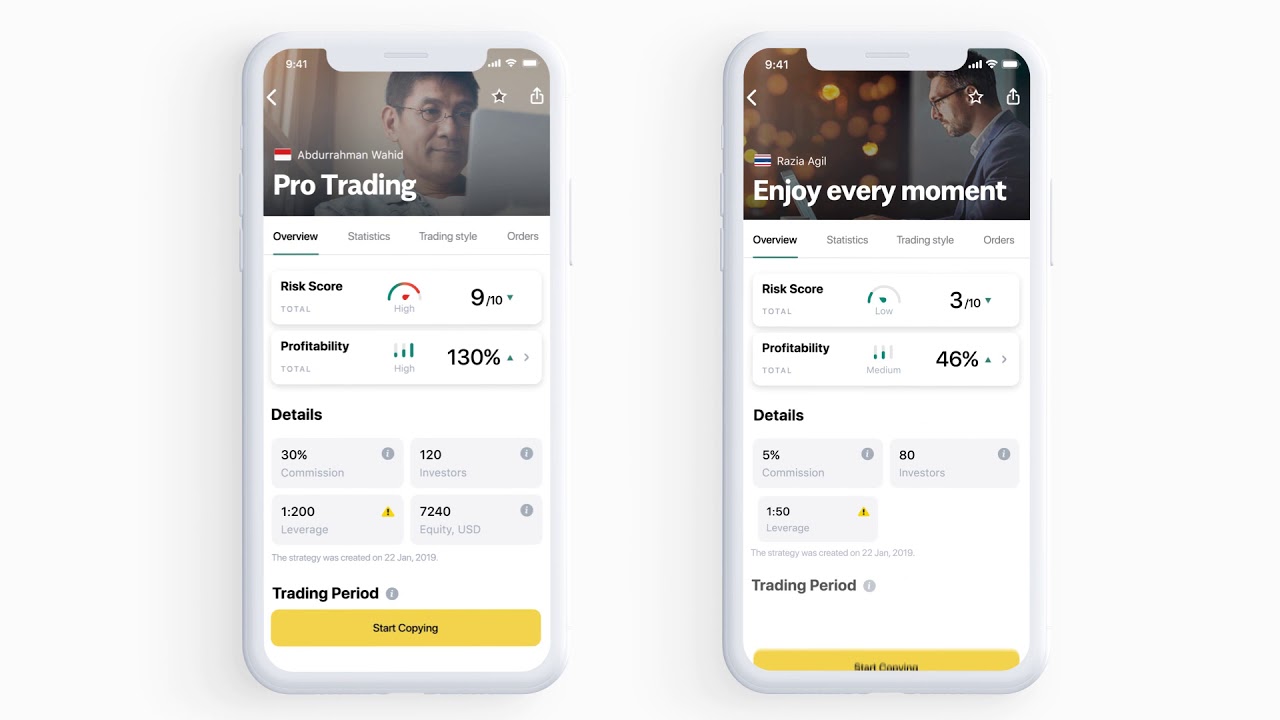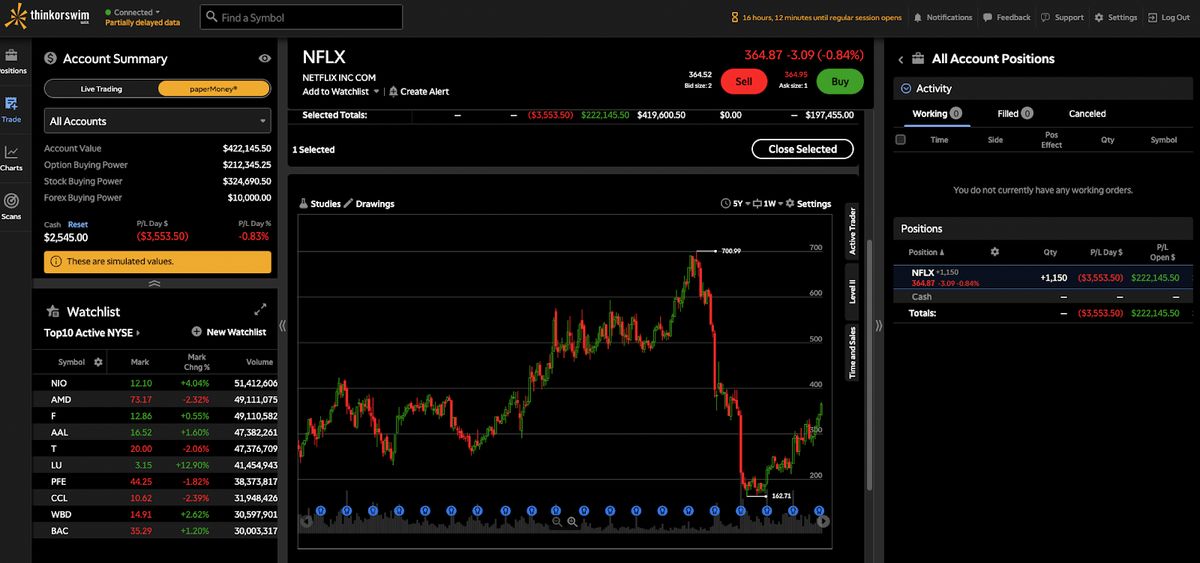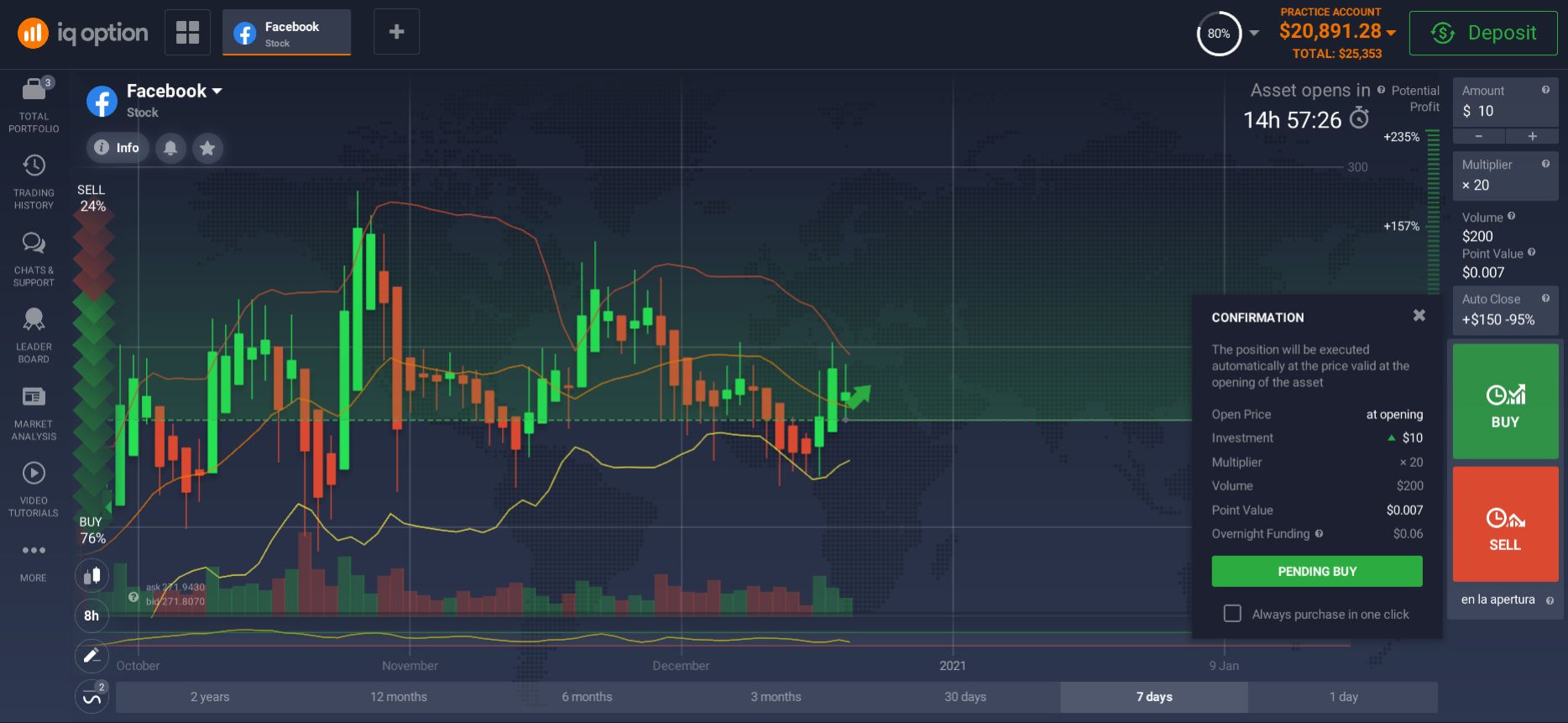Introduction
Welcome to the world of copy trading, where investors have the opportunity to replicate the strategies and trades of successful traders. In recent years, copy trading has become a popular and convenient way for individuals to participate in financial markets without having extensive knowledge or experience. This innovative concept has revolutionized the way people invest in stocks, currencies, commodities, and other assets.
Copy trading, also known as social trading, allows investors to automatically copy the trades made by seasoned traders, commonly referred to as “leaders” or “gurus.” Through a copy trading platform, investors can connect with these leaders, browse their portfolios, and choose to replicate their investment strategies. This method gives novice traders the chance to benefit from the knowledge and expertise of experienced professionals.
Copy trading platforms provide a user-friendly interface that enables investors to monitor the performance of various leaders and their portfolios in real-time. By accessing historical data and performance metrics, investors can identify leaders who have consistently generated positive returns and have a track record of success.
One of the key benefits of copy trading is its accessibility. It allows individuals with limited investment knowledge or time constraints to participate in financial markets. With just a few clicks, users can create an account, connect it to a copy trading platform, and start copying the trades of experienced leaders. This democratization of investing has opened up opportunities for those who were previously excluded due to lack of expertise or resources.
Copy trading also offers the advantage of diversification. By copying multiple leaders with different trading strategies and asset allocations, investors can spread their risk and potentially achieve better returns. Additionally, copy trading platforms often provide tools and features to help users manage their portfolio, set stop-loss levels, and control their risk exposure.
While copy trading offers numerous benefits, it’s important to understand the risks involved. As with any form of investment, there is always the potential for losses. The performance of a leader’s portfolio is not guaranteed, and the past success does not guarantee future results. It’s essential for investors to conduct thorough research, carefully select leaders, and continually monitor their investment.
In the following sections, we will delve deeper into how copy trading works, explore its advantages and disadvantages, discuss how to choose a copy trading platform, and provide tips and strategies for successful copy trading.
What is Copy Trading?
Copy trading is a form of investing that allows individuals to automatically replicate the trades and investment strategies of successful traders. It is a type of social trading where novice investors can connect with experienced professionals, also known as leaders or gurus, and copy their trades through a copy trading platform.
The concept behind copy trading is simple: rather than trying to navigate the complex world of financial markets on their own, investors can leverage the knowledge and expertise of established traders. By copying the trades made by these leaders, investors hope to achieve similar returns and benefit from their successful strategies.
Copy trading platforms provide a seamless interface where investors can browse through a list of available leaders and analyze their performance, trading history, and risk profile. Investors can then choose to follow and replicate the trades of one or multiple leaders, depending on their preferences and risk tolerance.
Once an investor selects a leader to copy, all future trades made by the leader will be automatically replicated in the investor’s account. The copying process is done in real-time, ensuring that investors are always up-to-date with the trades being executed by their chosen leaders.
Copy trading platforms also offer additional features that enhance the overall experience for investors. These features can include risk management tools, such as setting stop-loss levels and portfolio diversification options. Additionally, investors can interact with leaders and other users, share insights, and discuss trading strategies through social features embedded in the platform.
One of the advantages of copy trading is that it opens up opportunities for individuals who may not have prior knowledge or experience in trading. By following the trades of successful leaders, investors can participate in financial markets without the need to conduct in-depth research or monitor market trends themselves.
Furthermore, copy trading provides a platform for investors to learn from seasoned professionals. By studying the strategies and trades of leaders, novice investors can gain valuable insights into the dynamics of financial markets and develop their own investment skills over time.
However, it’s important to note that copy trading is not without its risks. While investors can potentially benefit from the success of leaders, there is no guarantee of success. The performance of leaders can fluctuate, and past performance is not indicative of future results. Investors should exercise caution, conduct thorough research, and diversify their copied trades to minimize risks.
In the next section, we will discuss how copy trading works in more detail, exploring the mechanics of replicating trades and understanding the factors that contribute to its success.
How Does Copy Trading Work?
Copy trading operates on the premise that novice investors can mirror the trades made by successful and experienced traders. But how exactly does copy trading work?
Copy trading is facilitated through specialized platforms that connect investors with leaders or gurus. These platforms serve as intermediaries, offering a range of tools and features that enable investors to effortlessly replicate the trades of their chosen leaders.
Once an investor joins a copy trading platform, they can browse through a list of available leaders and analyze their performance metrics, such as their average monthly returns, risk levels, trading frequency, asset allocation, and more.
After selecting a leader to copy, investors can allocate a portion of their capital to automatically mimic the trades made by the leader. This allocation can be adjusted based on personal preference and risk tolerance, allowing investors to have control over the amount of capital dedicated to copy trading.
When the chosen leader executes a trade, the copy trading platform replicates the same trade in the investor’s account in real-time. This means that investors’ accounts are synchronized with the leaders’ accounts, ensuring that they benefit from the same market opportunities and are instantly updated with any changes in their leaders’ portfolios.
Copy trading platforms also provide users with features to manage their copied trades effectively. Investors can set stop-loss levels, which automatically close copied positions if they reach a predefined loss percentage. This allows investors to limit their potential losses and protect their capital.
Furthermore, copy trading platforms often incorporate risk management features, such as portfolio diversification. This enables investors to allocate their copied capital across multiple leaders and investment strategies, reducing the risk of overexposure to a single trading style or asset class.
Transparency and data accessibility are key aspects of copy trading. Investors have access to comprehensive historical performance data for each leader, enabling them to make informed decisions when choosing whom to copy. This data includes details such as past trades, returns, risk metrics, and drawdowns, allowing investors to assess the leaders’ strategies and evaluate their performance over time.
Moreover, copy trading platforms foster a sense of community and collaboration. Users can interact with leaders and other investors, sharing insights, asking questions, and discussing investment ideas. These social features allow for the exchange of knowledge and experiences, enhancing the overall learning and engagement within the copy trading community.
It’s important to note that while copy trading platforms strive to ensure a seamless and efficient copying process, there can be slight differences between the trades executed by leaders and the replicated trades in investors’ accounts. These differences can occur due to factors such as market volatility, order execution speed, and potential slippage.
By understanding how copy trading works, investors can leverage the benefits of this innovative investment approach. The next section will delve into the advantages of copy trading and why it has gained popularity among both novice and experienced investors.
Advantages of Copy Trading
Copy trading offers several advantages that have contributed to its growing popularity among investors of all experience levels. Let’s explore some of the key benefits of copy trading:
1. Accessibility: Copy trading provides accessibility to the financial markets, allowing individuals with limited knowledge or experience to participate. Novice investors can leverage the expertise of experienced traders without needing to learn complex trading strategies or spend extensive time researching the markets.
2. Time-saving: Copy trading significantly reduces the time and effort required to monitor and execute trades. Investors simply need to select a leader to copy and the copy trading platform will automatically replicate the leader’s trades in their account. This frees up time for investors to focus on other aspects of their lives while their investments are managed by the selected leaders.
3. Learning opportunity: Copy trading provides a valuable learning opportunity for new investors. By observing and analyzing the strategies and trades of successful leaders, investors can gain insights into market dynamics, risk management techniques, and investment strategies. This allows them to develop their own knowledge and skills over time.
4. Diversification: Copy trading platforms offer the ability to diversify investments by copying multiple leaders with different investing styles and asset allocations. By spreading investments across different leaders and strategies, investors can reduce risk and potentially achieve better overall returns.
5. Emotion-free trading: Emotions can often cloud judgment and lead to impulsive investment decisions. Copy trading eliminates emotional biases, as trades are executed based on the strategies and actions of leaders. This can prevent investors from making irrational decisions during periods of market volatility or uncertainty.
6. Real-time monitoring and transparency: Copy trading platforms provide real-time monitoring of leaders’ trades and portfolios. Investors can track the performance of leaders, view historical data, and assess their strategies. This transparency empowers investors to make informed decisions about which leaders to follow and replicate.
7. Flexibility and control: Copy trading allows investors to maintain control over their investments. They can choose to stop copying a leader or adjust the allocation of copied capital at any time. This flexibility enables investors to adapt their copy trading strategy based on market conditions and changing preferences.
8. Opportunity for passive income: Copy trading presents an opportunity for investors to generate passive income. By selecting successful leaders and copying their trades, investors can potentially earn profits without actively participating in trading themselves.
While copy trading offers numerous advantages, it’s important for investors to approach it with a cautious mindset. The next section will discuss the potential risks and disadvantages associated with copy trading, allowing investors to make well-informed decisions and minimize potential pitfalls.
Risks and Disadvantages of Copy Trading
While copy trading offers several advantages, it’s important to be aware of the potential risks and disadvantages. By understanding and considering these factors, investors can make informed decisions and mitigate potential pitfalls. Let’s explore some of the risks and disadvantages of copy trading:
1. Performance is not guaranteed: Just because a leader has a successful trading history does not guarantee future success. Market conditions can change, and leaders may experience periods of underperformance or losses. Investors should diligently research leaders, assess their strategies, and consider the inherent uncertainty of financial markets.
2. Risk of loss: Investing always carries a risk of loss, and copy trading is no exception. Investors are exposed to the risk of experiencing losses if the copied trades result in negative performance. It’s essential to set realistic expectations and carefully manage risk by diversifying the copied capital and utilizing risk management tools offered by the copy trading platform.
3. Limited control: While copy trading allows investors to replicate the trades of leaders, they have limited control over the actual decision-making process. Investors rely on the skills and judgment of leaders, which may not align with their own investment goals and risk tolerance. It’s crucial to choose leaders whose strategies and risk appetite align with personal preferences.
4. Potential for unreliable leaders: Not all leaders on copy trading platforms may have the necessary skills, knowledge, or ethical standards. There is a risk of following unreliable or unscrupulous leaders who may have exaggerated performance claims or engage in risky trading practices. Performing thorough due diligence and considering leaders with a proven track record is essential.
5. Spread of losses: If an investor copies multiple leaders, there is a risk that losses from one leader’s trades can spread to others. This can occur if the copied leaders have similar investment strategies or if the market conditions adversely affect multiple leaders in the same way. Diversification across different leaders and asset classes can help mitigate this risk.
6. Technical issues and platform reliability: Copy trading relies on the functionality and reliability of the copy trading platform. Technical issues, such as server downtime or delayed trade execution, can potentially impact the synchronization of trades and lead to discrepancies between the leader’s trades and the replicated trades. Investors should choose reputable and reliable copy trading platforms.
7. Over-reliance on leaders: Copy trading can create a sense of over-reliance on leaders’ expertise. It’s important for investors to be actively engaged in monitoring and managing their copied trades. Regularly assessing leaders’ performance, staying informed about market trends, and adapting the copy trading strategy as needed is crucial to successful copy trading.
8. Potential for hidden fees: Some copy trading platforms may charge additional fees or commissions for using their services. Investors should carefully review the fee structure of the platform, including any hidden costs, to ensure they understand the expenses associated with copy trading.
By being aware of the risks and disadvantages of copy trading, investors can take the necessary precautions to mitigate these factors and make informed decisions. In the next section, we will discuss key considerations for choosing a copy trading platform that aligns with your investment needs and goals.
Choosing a Copy Trading Platform
When it comes to copy trading, choosing the right platform is crucial for a successful and enjoyable experience. With numerous copy trading platforms available, it’s essential to consider several factors before making a decision. Here are some key considerations for selecting a copy trading platform:
1. Reputation and credibility: Look for a copy trading platform with a strong reputation and positive reviews. Research the platform’s history, user feedback, and regulatory compliance to ensure it operates with transparency and integrity.
2. Range of available leaders: Assess the pool of leaders available on the platform. Look for a diverse selection of experienced and successful traders who align with your investment goals. The platform should offer leaders with different trading strategies and asset allocations to enable effective portfolio diversification.
3. Performance metrics and historical data: Examine the performance metrics and historical data provided by the platform for each leader. Look for information such as average returns, risk levels, drawdowns, and trading frequency. This data will help you make informed decisions when selecting leaders to copy.
4. User interface and experience: The copy trading platform should have a user-friendly interface and intuitive navigation. It should be easy to browse and search for leaders, view their portfolios, and access relevant information. The platform should also offer a seamless and efficient copying process.
5. Risk management tools: Evaluate the risk management features offered by the platform. Look for tools such as stop-loss orders, which can help protect your capital by closing positions if they reach a specified loss level. The platform should also provide options for portfolio diversification to manage risk effectively.
6. Transparency and data accessibility: Ensure that the copy trading platform provides transparency in terms of leader performance and trade replication. Investors should have access to real-time monitoring of their copied trades, as well as comprehensive historical data for leaders, enabling them to make informed decisions.
7. Social features and community interaction: Consider whether the platform offers social features that facilitate interaction with leaders and fellow investors. The ability to communicate, share insights, and discuss trading strategies within the copy trading community can enhance the learning experience and provide valuable networking opportunities.
8. Security and safety: It is crucial to prioritize the security and safety measures implemented by the copy trading platform. Look for platforms that utilize robust encryption protocols, offer secure payment gateways, and have stringent measures in place to protect users’ personal and financial information.
9. Customer support: Consider the quality and availability of customer support provided by the copy trading platform. A responsive and knowledgeable customer support team can provide assistance with any queries or issues that may arise during the copy trading process.
By carefully evaluating these factors, you can choose a copy trading platform that aligns with your investment needs, goals, and preferences. Remember to review the platform’s terms and conditions, fee structure, and any additional charges associated with copy trading before committing to a platform.
In the following section, we will provide tips and strategies for successful copy trading, helping you maximize the potential benefits of this investment approach.
Tips and Strategies for Copy Trading Success
Successfully navigating the world of copy trading requires careful consideration and strategic planning. While copy trading offers the potential to benefit from the expertise of successful traders, it’s important to approach it with a thoughtful mindset. Here are some tips and strategies to enhance your copy trading experience:
1. Perform thorough research: Before selecting leaders to copy, conduct thorough research and due diligence. Assess the performance metrics, trading history, risk levels, and consistency of the leaders you are considering. Look for leaders who have demonstrated a track record of success and align with your investment goals and risk tolerance.
2. Diversify your portfolio: Diversification is key to reducing risk in copy trading. Consider copying multiple leaders with different trading strategies and asset allocations. This spreads your risk and allows you to benefit from different investment approaches. Diversification can help mitigate losses if one leader’s trades perform poorly.
3. Regularly review and evaluate leaders: Continuously monitor the performance of the leaders you are copying. Keep a close eye on their trades, performance metrics, and any changes in their strategies. If a leader’s performance declines or no longer aligns with your goals, consider stopping copying them and exploring other potential leaders.
4. Utilize risk management tools: Take advantage of the risk management tools offered by the copy trading platform. Set appropriate stop-loss levels to protect your capital from excessive losses. Consider implementing trailing stops to secure profits as a trade moves in your favor. Use features such as portfolio diversification to balance your exposure across different leaders and markets.
5. Stay informed about market trends: Though you are relying on leaders’ expertise, it’s important to stay informed about market trends and news. This allows you to have a broader understanding of the market conditions impacting the trades being copied. Consider following financial news, analysis, and other relevant sources to stay up-to-date.
6. Regularly assess your copy trading strategy: Continually evaluate your copy trading strategy to ensure it aligns with your goals and risk tolerance. Adapt your strategy as necessary to reflect changes in the market or your personal circumstances. Regularly review the portfolio allocation and make adjustments if needed.
7. Participate in the copy trading community: Engage with the copy trading community on the platform. Interact with other users and leaders, share insights, ask questions, and discuss trading strategies. This can provide valuable insights, foster learning, and broaden your understanding of different investment approaches.
8. Manage emotions and avoid impulsive decisions: Emotions can influence investment decisions. Avoid making impulsive changes to your copy trading strategy based on short-term market fluctuations. Stick to your long-term investment goals and trust in the collective experience and expertise of the leaders you are copying.
9. Continuously educate yourself: Never stop learning and improving your knowledge of the financial markets. Take advantage of educational resources provided by the copy trading platform, such as tutorials, webinars, and educational articles. Enhancing your knowledge will help you make more informed decisions and become a better copy trader.
10. Be patient and realistic: Copy trading is a long-term investment approach. Set realistic expectations and understand that there will be periods of market volatility and fluctuations in performance. Avoid chasing short-term gains and focus on the overall performance and consistency of the leaders you are copying.
By following these tips and strategies, you can enhance your chances of success in copy trading. Remember that copy trading should be viewed as a complement to your overall investment strategy, and it’s essential to continually review and assess your portfolio to ensure it aligns with your goals and risk tolerance.
In the final section, we will summarize the key points discussed throughout the article, providing a concise overview of copy trading and its potential benefits.
Conclusion
Copy trading has revolutionized the world of investing, offering individuals with varying levels of experience and knowledge the opportunity to benefit from the strategies and trades of successful traders. By leveraging copy trading platforms, investors can connect with experienced professionals, replicate their trades, and participate in financial markets with ease.
The advantages of copy trading are evident. It provides accessibility to the markets, saves time by automating the trade replication process, and offers a valuable learning opportunity for novice investors. The ability to diversify investments, remove emotions from trading decisions, and have real-time monitoring of trades further enhances the appeal of copy trading.
However, it’s important to recognize and mitigate the risks and disadvantages associated with copy trading. Past performance is not a guarantee of future success, and investors must exercise caution when selecting leaders to copy. Additionally, reliance on leaders and the potential for technical issues and hidden fees are factors to consider.
When choosing a copy trading platform, factors such as reputation, range of available leaders, performance metrics, user experience, and risk management tools should be considered. The transparency and accessibility of data, as well as the availability of a supportive community, are also important considerations.
To succeed in copy trading, investors should conduct thorough research, diversify their portfolios, actively monitor and evaluate leaders, utilize risk management tools, and stay informed about market trends. Engaging with the copy trading community and continuously educating oneself are also beneficial for long-term success.
Copy trading is not a guarantee of profits, but with careful planning, strategic decision-making, and realistic expectations, it can be a valuable addition to an investor’s overall approach.
Overall, copy trading provides a unique opportunity for individuals to enter the world of investing with the guidance of experienced traders. By leveraging the principles of copying trades and implementing sound strategies, investors can potentially improve their chances of success and achieve their financial goals.

























